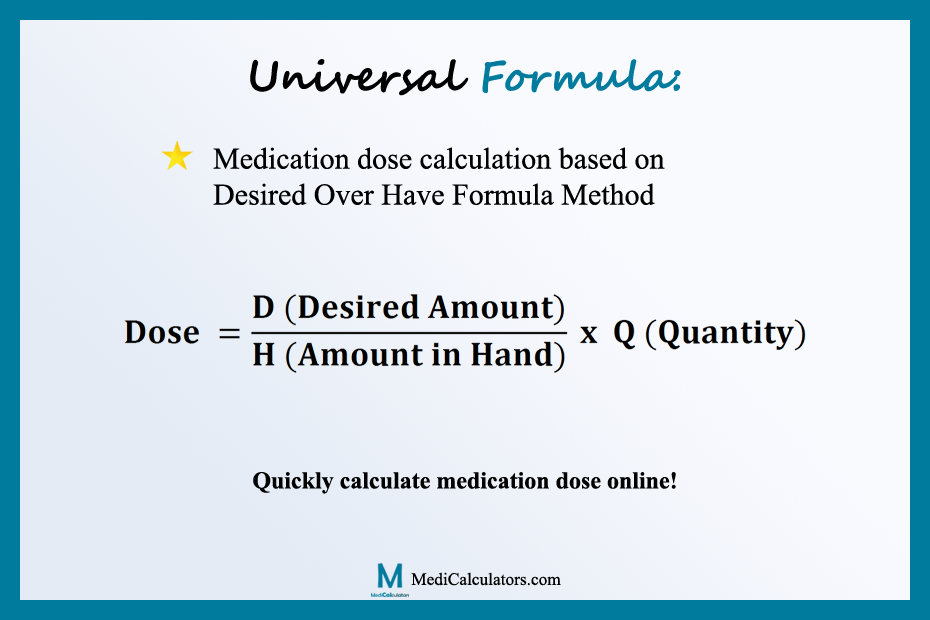When it comes to medication dosing, the universal formula, also known as the “desired over have method,” can be a helpful tool. This formula allows you to calculate the dose based on the prescribed amount and the available dose or concentration.
Universal Formula (Toney-Butler, 2021) (Desired Over Have Method)
The universal formula (Desired Over Have Method) uses three variables: the desired amount (D), the amount on hand (H), and the quantity (Q) in which the drug is supplied (e.g., tablet, capsule, liquid). The healthcare provider prescribes the desired amount, while the available dose or concentration of the medication represents the amount on hand. The quantity refers to the form and amount in which the drug is supplied, such as tablets, capsules, or liquid.
To calculate the dose using the universal formula or Desired Over Have Method, follow these steps:
- Take the desired amount (D) and divide it by the amount on hand (H).
- Multiply the result by the quantity (Q).
For example, let’s say you have a prescription for a medication where the desired amount is 10 mg, the amount on hand is 5 mg, and the quantity is 1 tablet. Using the universal formula, you would divide 10 mg by 5 mg, resulting in 2. Then, you would multiply 2 by 1 tablet, giving you a dose of 2 tablets.
Examples
Oral Dose
The doctor orders Cephalexin (Keflex) 750 mg P.O. every 12 hours. The pharmacy stocks 250 mg tablets. How many tablets should be administered per dose?

Intravenous (IV) Dose
The doctor places an order for digoxin 0.5 mg IV daily. Digoxin 0.25 mg/mL is available from the pharmacy. How many mL will you need to administer a 0.5 mg dose?

Subcutaneous Dose
The doctor ordered Heparin 7500 units subcutaneous every 12 hours. The pharmacy provides a heparin vial with a concentration of 5000 units/mL. How many mL will you need to administer 7500 units?

Weight Based Dose
The doctor orders Medrol 4 mg/kg for a child weighing 64.8 lb. Medrol is available
as 500 mg/4mL. How many milliliters of medication must the nurse administer?
Encase of weight based medication we need to multiply weight to desired dose.

The universal formula is a useful tool for healthcare professionals and patients alike to ensure accurate medication dosing. By following this formula, you can calculate the appropriate dose based on the prescribed amount and the available dose or concentration of the medication.

Pingback: How to Calculate Continuous IV Drips (units/hour - ml/hour) - Medicalculators
Pingback: How to Calculate Continuous IV Drips (mcg/min) | Med Calculations - Medicalculators
Pingback: How to Calculate IV Drips (mcg/kg/minute) | Med Calculations - Medicalculators